Delicately fizzy with a gentle, berry-rich sweetness, this fruit kvass is delicious and refreshing. It's a perfect use for your summer fruit and makes a healthy drink that's low in sugar, brimming with nutrients, and rich in beneficial bacteria.
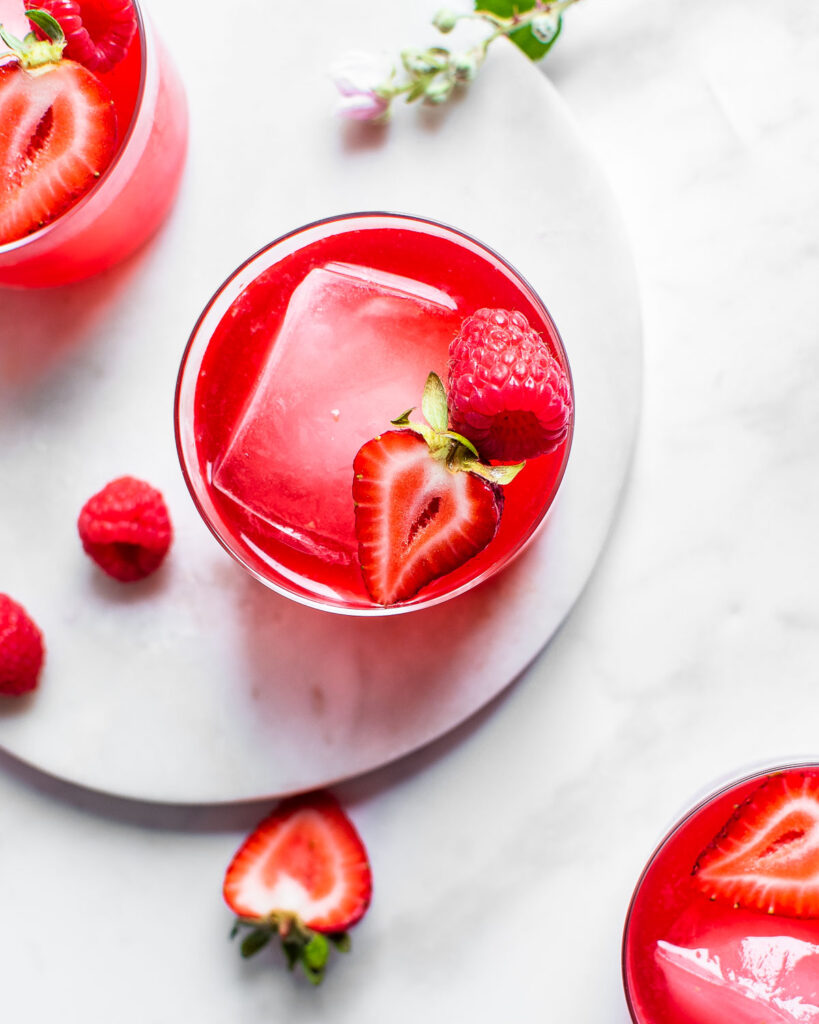
What is it?
Kvass is a fermented drink from Eastern Europe. Kvass is typically made by fermenting rye bread in water; however, several variations exist including beet kvass and this fruit kvass which is made from berries.
Kvass made from berries (or other fruit) in absence of bread, was traditionally referred to as Moscow Kvass in Elena Molokhevets' A Gift to Young Housewives - a 19th-century tome that provides instructions on preparing thousands of traditional Russian dishes the way they would have been made prior to the industrialization of food in the 20th century.
What's in it?
This recipe for fruit kvass contains berries, water, and a touch of salt and honey. While it's a departure from the traditional method of packing fruit on a layer of straw in a barrel that Molokhevets calls for, you'll find that it's easy and works quite well.
- Fruit gives the kvass flavor and a gorgeous vivid red color.
- Salt provides a touch of electrolytes and supports a healthy environment for fermentation.
- Honey feeds the beneficial bacteria that transform fruit and water into kvass.
Is it good for you?
While research on kvass (and fruit kvass, specifically) is scarce, the benefits of fermented foods and drinks are well-documented. Fermented drinks are rich in beneficial bacteria, and, when made from fruit, also rich in various antioxidants (that's what gives the kvass such a vivid color).
- Kvass is rich in beneficial bacteria, specifically Lactobacillus casei, Leuconostoc mesenteroides, and Saccharomyces cerevisiae (1).
- Fermenting fruit enhances its antioxidant capacity and fermented fruit juices are rich in probiotics (2).
- Berries are rich in various beneficial compounds that support cellular health and combat inflammation (3, 4).
Tips
Fruit kvass is deceptively easy to make. If you can toss berries into a jar, and pour in some water, you can make it. It's extremely simple to make; however, there are a few things you'll want to keep in mind.
- Use the best quality fruit. Fruit that is mushy, blemished, or at the end of its shelf life may introduce unwanted bacteria into your kvass or damage its flavor.
- Burp your jar every day. Carbon dioxide builds up during fermentation, and burping your jar allows you to release the extra gas.
- Shake your jar daily. This practice helps prevent mold from forming and potentially making your kvass go bad.
Variations
Substitute diced peaches, nectarines, plums or cherries for the berries to make a stone fruit kvass.
Swap red currants for some (or all) of the berries.
Swap diced apples for the berries and add a stick of cinnamon or a few pods of star anise.
Add herbs. Mint, chamomile, and anise hyssop would all be nice added with the fruit during the fermentation process.
Common Questions
No. Berry and fruit kvass don't typically call for (or need) a starter culture; however, using a starter culture may speed up the fermentation process while also introducing specific strains of beneficial bacteria. Kombucha tea, jun tea, water kefir, or ginger bug all work as starter cultures if you wish to speed up the process.
As fruit ferments, it releases lots of carbon dioxide. In a tightly sealed environment, the carbon dioxide has no place to go and so pressure builds within your jar. If the pressure becomes too high, your jar can explode. If you burp the jar every day, you'll release the excess gas and lower the chance of any mishaps.
Kvass is a naturally fermented drink, and as such, it typically contains a very small amount of alcohol - about 1.5%. For kvass that ferments an extended period of time, it may contain up to 2.5% alcohol by volume (1).
Once you strain the kvass, transfer it to a bottle and store it in the fridge for up to 1 week.
Fruit kvass will last about 1 week stored in a bottle in the fridge.
If your kvass smells pleasantly sour and fruity, it's safe to drink. If you see visible signs of mold, if it has a viscous or unpleasant texture, or if it smells or tastes putrid, give it a miss. You can also check the acidity with PH strips intended for kombucha. For safety, it should reach a PH of less than 4.5. Mature kvass reaches a PH of about 3.8 (2).
If you ferment your fruit kvass in a tightly sealed jar, it will be naturally fizzy when you open it; however, after straining you can pour it into a flip-top bottle and allow it to continue fermenting at room temperature for an additional day without burping. For safety, consider conducting the second fermentation in a closed environment, such as a closed cupboard or a cooler with a lid.
If you're not used to drinking or eating fermented foods, you'll need to start slowly to prevent unpleasant side effects that can occur in some people. I recommend starting with 2 tablespoons diluted in water and working up to drinking ¼ cup to 1 cup at a time.
You should be able to use frozen fruit in this recipe in place of fresh fruit.
Other summer drinks you might like
References
- Dlusskaya, E., Jänsch, A., Schwab, C. et al. Microbial and chemical analysis of a kvass fermentation. Eur Food Res Technol 227, 261–266 (2008).
- Melini F, Melini V, Luziatelli F, Ficca AG, Ruzzi M. Health-Promoting Components in Fermented Foods: An Up-to-Date Systematic Review. Nutrients. 2019 May 27;11(5):1189.
- Burton-Freeman, Britt M et al. “Red Raspberries and Their Bioactive Polyphenols: Cardiometabolic and Neuronal Health Links.” Advances in nutrition (Bethesda, Md.) vol. 7,1 44-65. 15 Jan. 2016
- Mazzoni L, Perez-Lopez P, Giampieri F, Alvarez-Suarez JM, Gasparrini M, Forbes-Hernandez TY, Quiles JL, Mezzetti B, Battino M. The genetic aspects of berries: from field to health. J Sci Food Agric. 2016 Jan 30;96(2):365-71. 2015 May 27.
- Sergei V. Jargin, Kvass: A Possible Contributor to Chronic Alcoholism in the Former Soviet Union—Alcohol Content Should Be Indicated on Labels and in Advertising, Alcohol and Alcoholism, Volume 44, Issue 5, September-October 2009, Page 529
- Lidum, I., Karklina, D., Kirse, A., Quality Changes of Naturally Fermented Kvass during Production Stages. Foodbalt, 2014.

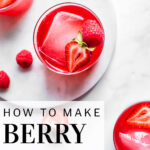
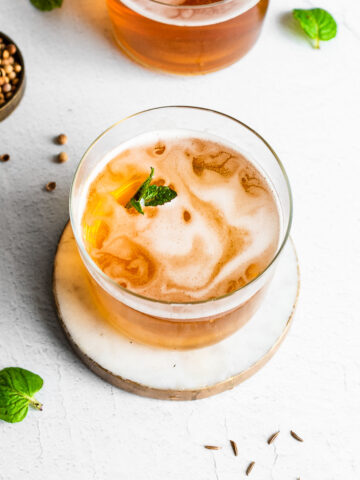

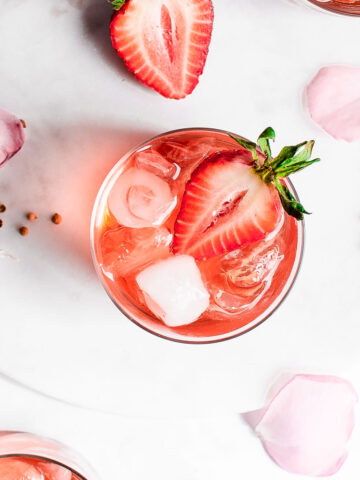
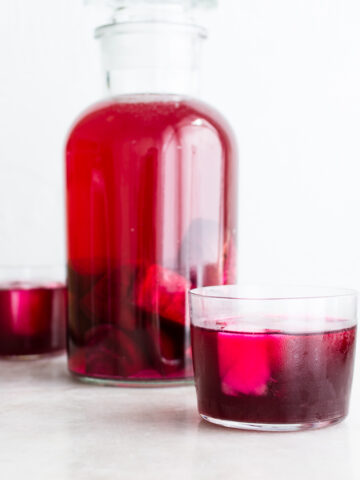

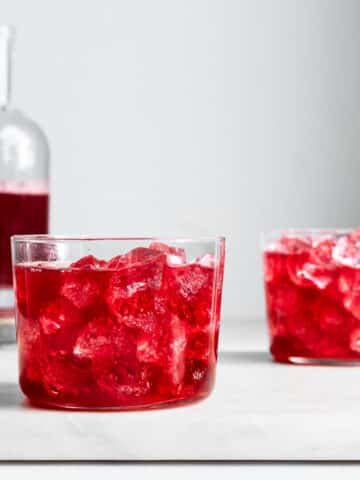
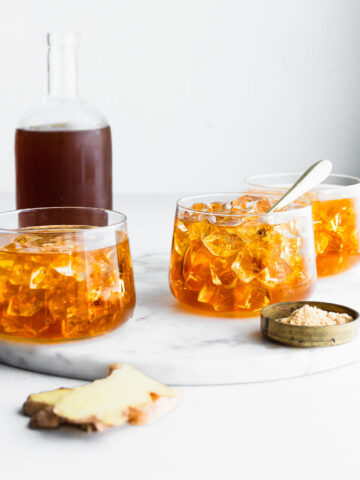
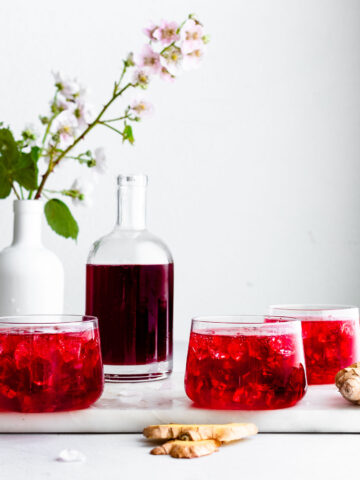
carla says
How critical is the 1" headspace? I'd prefer to use a larger jar and not have to discard any of the brine as we keep bees and harvesting honey is hard work!
Jenny McGruther says
It is essential to allow headspace to properly manage CO2. If you do not want it to be fizzy, then you can fill it to the top as long as you keep the lid on loosely. But your brew won't become effervescent.
Kasey says
I'm trying the fruit kvass today! Is there any problem with fruits floating to the top? Or do they need to be submerged? (I couldn't figure out how to submerge them).
Jenny McGruther says
You can try to submerge them with a weight, but there's generally so much liquid in kvass that it's difficult. Not to worry, though! Kvass is a short ferment, so the risk of mold is fairly low. Just shake your jar.
Nicci says
If I want to make a gallon of this, do I quadruple all of the ingredients?
Jenny McGruther says
Yes, simply quadruple the ingredients. It's very easy to scale up or down.
Erika Meir says
Happily trying my second batch. The first one w pear & ginger was delightful. Now I am trying orange & ginger.
Sophie says
This is so delicious 🙂 I used mainly strawberries and a 1/2 cup blueberries. Once strained, into the fridge and makes a lovely refreshing drink. I also make kombucha and kefir whey soda regularly and I have to say, this competes well with them! Thanks so much, going to try the ginger bug next!
Annie says
I made this using some strawberries and blackberries, and it was SO good. A little sweet, but not too much.
4waystoyummy says
I make kombucha, switchels, and Kefir. Now I am eager to try fruit kvass (I have made beet kvass). I am really hoping it will work with my frozen garden berries. I hate anything to go to waste, but here comes the warmer days and I need to find something to do with all the berries left in the freezer. Thank you!
Renee Pottle, SeedtoPantry says
I am anxious to try this. Just made a batch of strawberry shrub which is delicious, but like the idea of fermenting it too. Thanks.
Ann says
Could you use tomatoes? Technically they are fruit. Ours are sweet because they are vine-ripened and it would be a way to consume them instead of fresh or canned through the fall and winter. How would I change the recipe?
I used to make kombucha so I am familiar with the fermenting process and life the results of the second ferment. We have lots of tomatoes right now and I thought fermenting them would be a good idea.
Jenny McGruther says
I think you should be able to use tomatoes, and I wouldn't change the recipe otherwise.